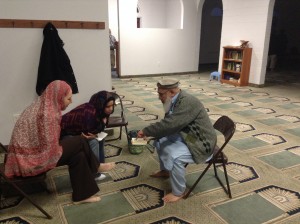Three professors are teaching three new classes to give students a more in-depth understanding and experience with religions with which they may be unfamiliar.
Prior to fall semester, students looking to understand other religions were provided with Religion 351, a three-credit class surveying several Christian, Middle-Eastern and Eastern religions. The other options were two one-credit classes, each on Judaism and

Islam. This semester, the Department of Religious Education has also made available three additional, two-credit classes to help students experience and understand other religions.
Mauro Properzi is a professor of the recently available class Survey of Christianity. The class allows students to increase their understanding of Catholic doctrines and practices as well as learning about the Protestant Reformation.
Properzi said that many LDS students believe that they already understand traditional Christianity well enough.
“In reality, students often hold misconceptions about traditional Christianity which are also present in Mormonism at large,” Properzi said. “This is expressed especially when they exaggerate some of the differences between LDS doctrine and mainstream Christianity. Instead, the class highlights the many ways in which Mormonism and traditional Christianity can be seen as members of the same family.”
Greg Wilkinson, a professor teaching Survey of Eastern Religions, said his students have the opportunity to read and discuss several sacred texts from Confucianism, Taoism, Hinduism and two other Eastern belief systems.
“It allows for a different kind of analysis of these scriptures than what (you) might see in a literature class or in a history class,” Wilkinson said. “There still is that focus of turning back to (LDS) doctrine, of turning back to theology.”
Wilkinson also said he hopes students will be able to see similarities as well as contrasts between their faith and others’ faith in order to gain appreciation and empathy for their beliefs. Wilkinson said students have expressed a desire to explore these religions even further.
Andy Reed teaches Survey of Judaism and Islam. Prior to this semester, students could learn about both of these religions in two, one-credit classes. Now they have been combined into one, two-credit class that goes into greater depth of each. He said his students have seen several similarities between Islam’s Hajj and the journey to the temple for a member of The Church of Jesus Christ of Latter-day Saints.
“We’re maybe not as different as sometimes we think we are. There’s much more commonality with Judaism and Islam,” Reed said. “They’ve found a comparative for understanding their own experience but also … a desire to find ways to contribute to improving relations with different religions.”
The Church has made a recent effort to increase interfaith discussion, and these professors feel that these recently added classes will help to further this mission.




